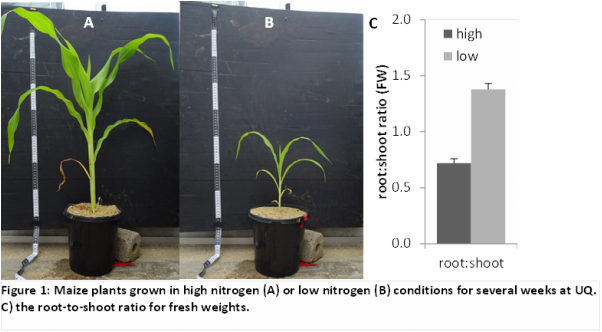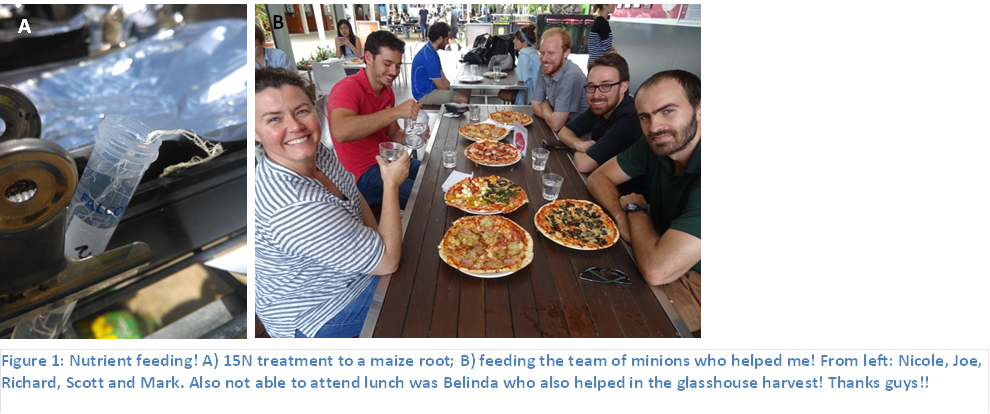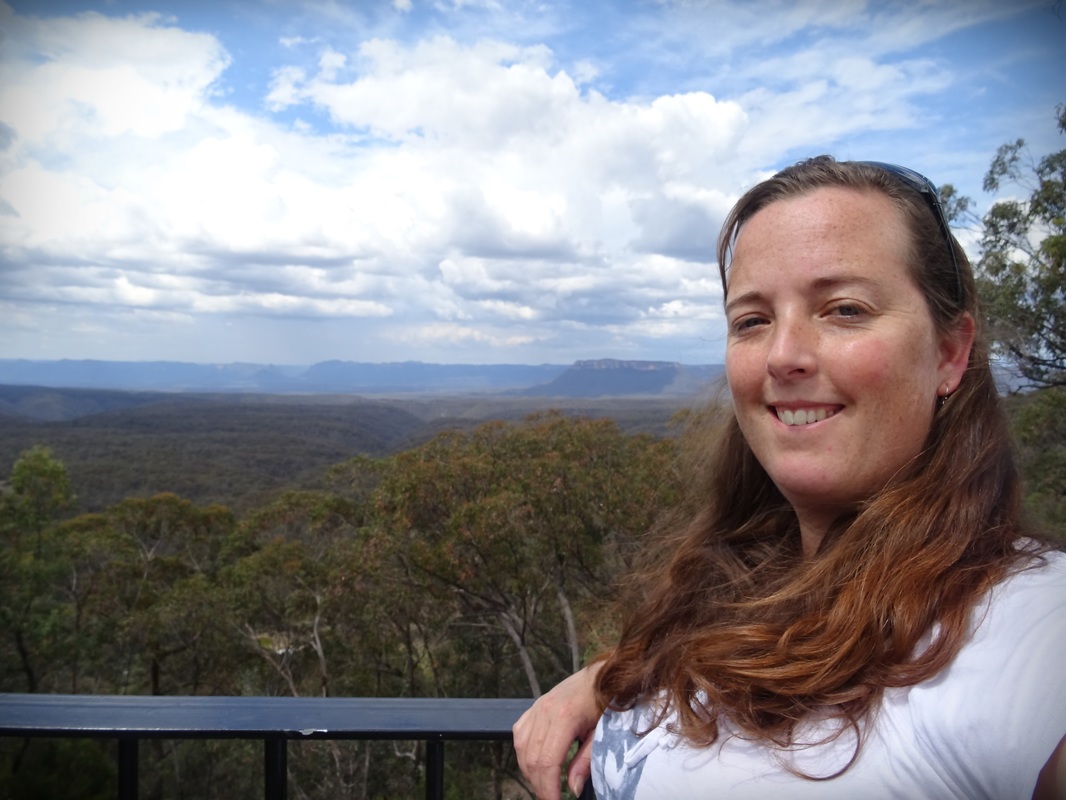 Glasshouse experiment The University of Queensland, Brisbane, Australia Welcome to part 2 of my travel blog. For the last month I have been based at The University of Queensland in the lab of Professor Susanne Schmidt conducting an experiment looking at uptake of nitrogen by different root types in maize. The plants grew for 6 weeks either on high N (Fig 1A) or low N (Fig 1B) and then one seminal root and one crown root was fed 15N for 30 minutes after which time the root was rinsed, dried down, weighed, ground, and then a 3 mg sample of each root was sent to UC Davis for 15N quantification. The fresh and dry weights of the remaining root system and shoots were also recorded. The root-to-shoot ratio is in Fig 1C and it’s nice to see the text book response with the high nitrogen-fed plants having more shoot mass than root mass, while the low nitrogen-fed plants were the reverse. The glasshouse harvest was not trivial with temperatures between 35 and 40°C by 11 am when each day’s work was completed. I have to thank the fantastic team of people in the Schmidt group (Fig 2B) who’s positive attitudes made it not just productive but also a fun experience! In particular I’d like to thank Nicole Robinson and Richard Brackin who are the tireless post-docs in Prof. Schmidt’s team who helped me with every step! Next part of my journey – Malaysia Campus
0 Comments
Leave a Reply. |
AuthorAmanda Rasmussen Archives
May 2023
Categories |

 RSS Feed
RSS Feed
